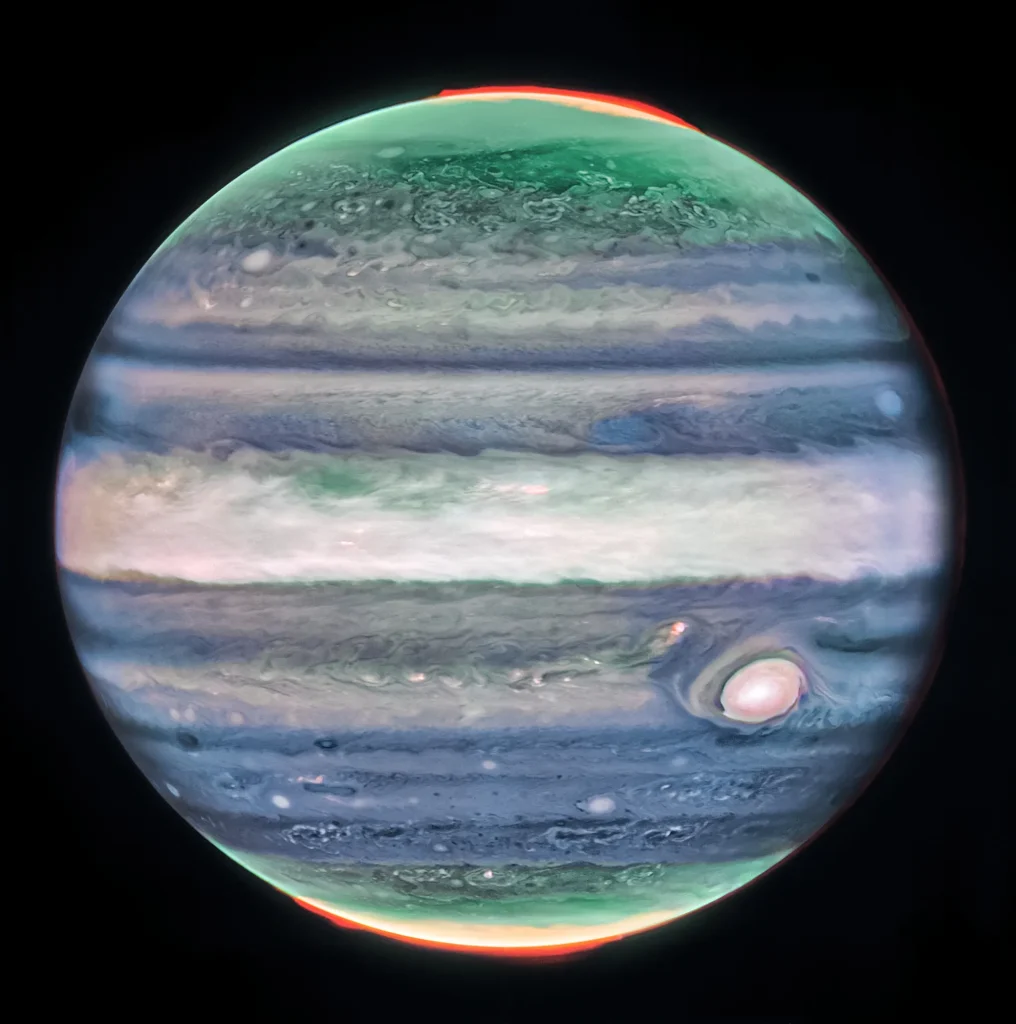James Webb Telescope discovery on Jupiter
So what has the James Webb Space Telescope been up to lately??? Oh you know just discovering never-before-seen features in the atmosphere of the largest planet in our solar system, Jupiter.
The high-speed jet stream, which spans more than 4,800 km wide, sits over Jupiter’s equator above the main cloud decks. This discovery gives insight into how the layers of Jupiter’s famously turbulent atmosphere interact with each other.
After the research team analysed the data from Webb’s NIRCam (Near Infrared Camera), a jointly led team from the University of Calfornia and Observatory of Paris were tasked with taking images of Jupiter 10 hours apart, or one Jupiter day in four different filters, each uniquely able to detect changes in small features at different altitudes of the atomspher on Jupiter.
They were completely surprised with their findings. Lead author of the findings, Ricardo Heuso of the University of the Basque Country in Bilbao, Spain stated “What we have always seen as blurred hazes in Jupiter’s atmosphere now appear as crisp features that we can track along with the planet’s fast rotation.”
So despite their many differences, such as Jupiter’s status as a gas giant and Earth’s rocky, temperate nature, both planets possess layered atmospheres. Through observations utilizing infrared, visible, radio, and ultraviolet light wavelengths, other missions have detected the lower, deeper layers of Jupiter’s atmosphere, where immense storms and ammonia ice clouds reside.

[Image: NASA, ESA, CSA, STScI, R. Hueso (University of the Basque Country), I. de Pater (University of California, Berkeley), T. Fouchet (Observatory of Paris), L. Fletcher (University of Leicester), M. Wong (University of California, Berkeley), J. DePasquale (STScI)]

That’s fascinating Natalie! The image is really quite beautiful.
That’s pretty amazing
Really interesting read 🙂